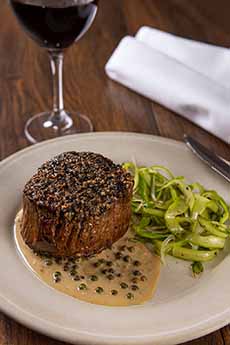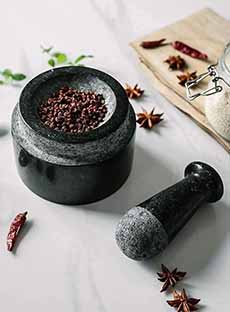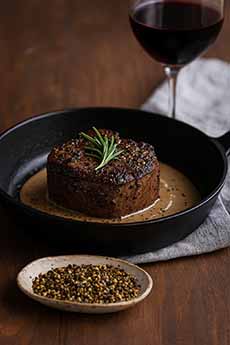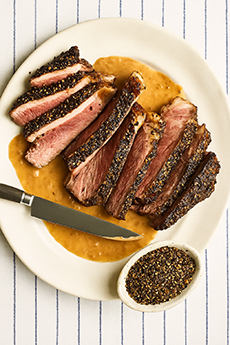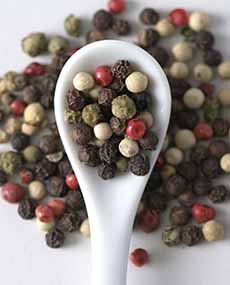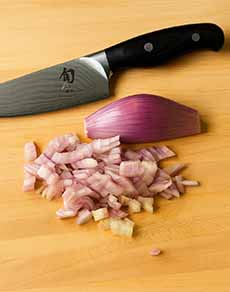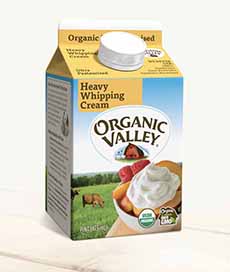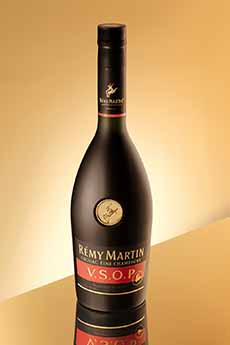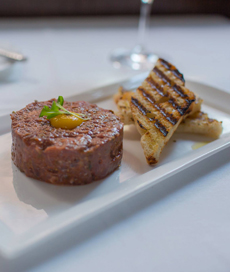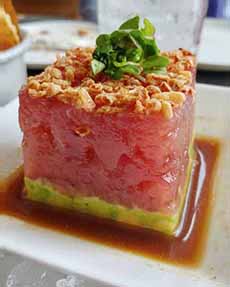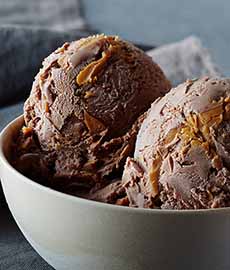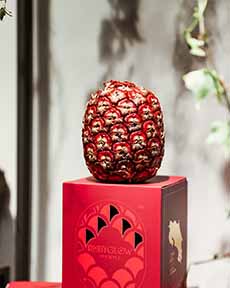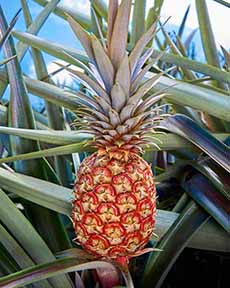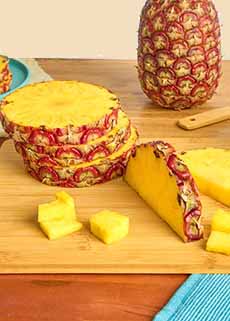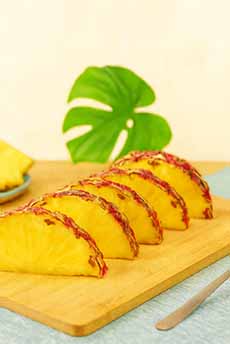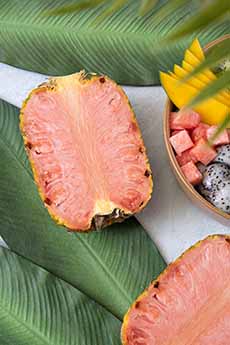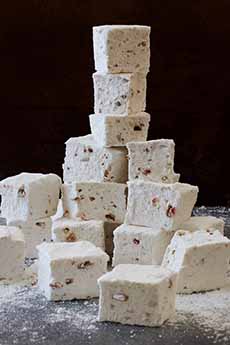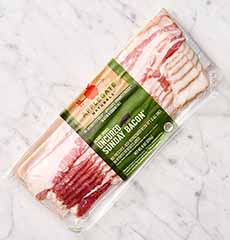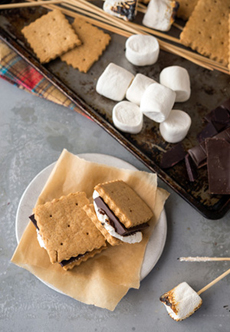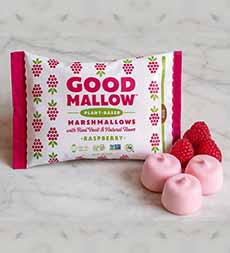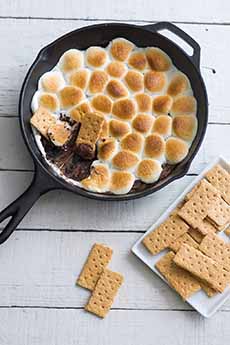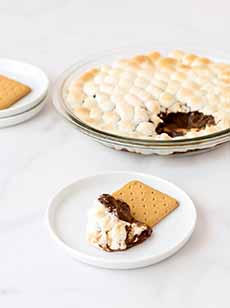|
National Poke Day, which celebrates the traditional Hawaiian dish, takes place on September 28th*. And, September is both National Chicken Month and National Rice Month. So how about something different: chicken poke bowls!
If you don’t already know poke, it’s a dish of diced, marinated raw fish that’s considered a local comfort food in Hawaii. Customizable at fast-casual restaurants and available as grab-and-go from food stores, poke is well-connected to the Aloha spirit**.
For National Poke Day, spread the Aloha spirit. Head to a poke restaurant or make poke bowls at home.
And yes, you can include chicken poke bowel recipe below for your celebration (with our thanks to Island Fin Poke for inspiring us to create it).
> The recipe follows.
> The history of poke follows the recipe.
> The 56 fish and seafood holidays.
> The year’s 48 poultry holidays: chicken, turkey, and duck.
> The year’s 40+ salad holidays.
> The year’s 15 rice holidays are below.
> More ways to use wonton strips, below.
RECIPE: CHICKEN POKE BOWL
Island Fin poke offers two Chicken Pokes Bowl:
Chicken: with corn, edamame, pineapple, scallions, wonton strips, and two sauces.
Korean BBQ Chicken: with corn, kimchi, scallions, sweet onions, spicy pickled vegetables (oshinko), and topped with spicy togarashi sauce***.
Recipe Overview: From Island Fin’s stated ingredients, we crafted our own recipe. If you want the Korean BBQ version, you can get the kimchi, pickled vegetables, and togarashi sauce at an Asian market or online.
However, unless you can find take-out Korean BBQ chicken, it’s a time-consuming process to make at home (see the ‡footnote).
About The Dressings: Island Fin uses heavier sauces that follow the preference of many Americans for creamy or otherwise thick dressings. We’ve listed their Wicked Wahini† sauce and Ono Ono†† sauce in the ingredients.
We personally prefer lighter dressings (e.g., vinaigrette on green salads). When testing our chicken bowl recipe, we’ve used plain ponzu sauce (photo #6), katsu sauce††† (photo #7) a Japanese BBQ sauce used on tonkasu, breaded pork cutlet) thinned/diluted with ponzu, spicy mayo thinned with rice vinegar or vegetable/canola, a lemon vinaigrette, and even Russian dressing.
Every option tasted good!
Prep time is 20 minutes plus cook time for the rice and the chicken.
Ingredients 2 Servings
For The Chicken & Marinade
1 pound boneless, skinless chicken thighs or breasts, cut into 1-inch cubes
2 tablespoons soy sauce
1 tablespoon sesame oil
1 teaspoon garlic powder
1 teaspoon ginger powder (or fresh grated ginger)
For The Base
2 cups cooked white rice
1 cup shelled edamame (pre-cooked—photo #4)
1/2 cup corn kernels (fresh, frozen, or canned)
1/2 cup fresh pineapple, diced (photo #5-substitute diced/canned in its juice)
Garnish: 2-3 scallions (green onions), thinly sliced
Garnish: wonton strips (photo #8)
Wicked Wahine sauce†, ponzu or substitute per note above
Ono Ono†† sauce‡
Preparation
1. COOK the edamame according to package directions. If using frozen corn, thaw and pat dry.
2. MARINATE the chicken cubes for 15-30 minutes in the marinade: soy sauce, sesame oil, garlic powder, and ginger.
3. COOK the chicken in a heated skillet or grill pan over medium-high heat for 6-8 minutes. Turn occasionally, until the chicken is golden brown and cooked through (internal temperature 165°F).
4. ASSEMBLE: Divide the rice into two bowls. Arrange the cooked chicken, edamame, corn, and diced pineapple in sections over the rice (like a Cobb salad). Garnish with the scallions and wonton strips.
5. SERVE with sauces for drizzling.
Note: We like to toss our ingredients together for eating, and use bowls deep enough to enable tossing.
THE HISTORY OF POKE
Poke, pronounced POE-kay (note that there is no accent mark over the “e”), is a traditional Hawaiian dish that consists of cubed raw fish, typically ahi tuna, that’s been seasoned and marinated. The word comes from the Hawaiian verb meaning to slice or to cut.
In a poke bowl, the seasoned raw fish is served over rice and topped with various ingredients like seaweed, avocado, cucumber, edamame, pickled vegetables, and different sauces. Today, the fish is usually marinated in ingredients like soy sauce, sesame oil, sea salt, onions, and sometimes spicy mayo or other flavorings.
The original, traditional Hawaiian poke was much simpler: just fresh fish seasoned with sea salt, seaweed, and onions. The modern poke bowl trend has expanded to include many more toppings and variations, making it popular as a healthy, customizable meal option worldwide.
The Beginning
While traditional poke had been available in Hawaiian grocery stores since the 1990s, the poke bowl as we know it today began to gain popularity in the mainland U.S. in the 2010s.
But the growth was dramatic during the mid-2010s. Poke moved to mainland in the early to mid-2010s, with poke becoming increasingly popular in North America starting in 2012 [source: Wikipedia].
The trend first took off, not surprisingly, in California. By the summer of 2015, the dish had become so trendy that dozens of places with names like Pokinometry and Wiki Wiki Poke (wiki means quick in Hawaiian), could be found from Santa Monica and throughout Los Angeles.
Health-conscious dining trends aligned with poke’s fresh, raw fish format.
The customizable bowl format appealed to American fast-casual dining preferences.
Between 2014 and 2016 alone, the amount of poke restaurants nearly doubled, growing from 342 venues to 700.
Island Fin Poke (which put an accent over the é, presumably so people would pronounce it correctly), began operating in Winter Springs, Florida in 2017, and has 17 franchise locations in 11 states (if you’re interested, head here).
They inspired the following recipe, after we learned that the chain had switched up their protein options by offering chicken alongside traditional seafood options. And next…beef? Lamb? Pork? Tofu?
We can’t wait to experiment with these.
(Some information provided by Chat GPT.)
WAYS TO USE WONTON CRISPS
This crunchy snack and salad garnish have quite a few additional uses.
Breakfast: On cottage cheese, oatmeal, Greek yogurt.
Dessert: Toss with honey and cinnamon for a dessert sauce, use as a savory fondue dipper.
Grain bowls: Add crunch to rice and other grain bowls.
Pasta: A fusion garnish for creamy pasta dishes.
Salads: Not just for Asian chicken salad, but any green salad.
Soups: Garnish Asian broths, ramen, wonton soup, or creamy Western soups including tomato soup.
More: Garnish Asian-fusion tacos and other fusion dishes.
In Main Courses
Breading: Crush and use to coat chicken or fish.
Casseroles: Layer for added crunch.
Crumbs: Crush and use as a breadcrumb substitute for gratins, savory pies/quiche.
Fried rice: Mix in during the last minute of cooking.
Stir fries: Toss in right before serving.
As Snacks
Dips/Asian: cChili sauce, duck sauce, plum sauce sweet and sour sauce.
Dips/Western: Hummus, guacamole, spicy mayo, or your favorite dip.
Entertaining Boards: Charcuterie, cheese, veggie, and other boards.
Snack mixes: Mix into Chex mix, trail mix, or party mix.
THE YEAR’S 15+ RICE HOLIDAYS
March 27: National Spanish Paella Day
April 19: National Rice Ball Day
June 18: National/International Sushi Day
July 6: National Handroll Day
August 8: National Mochi Day
August 9: National Rice Pudding Day
August 15: National Fresh Ahi Poke Day*
September: National Rice Month
September: Whole Grains Month
September 18: National Rice Krispie Treats Day
September 20: National Fried Rice Day
September 24: National Horchata Day
September, 4th Full Week: National Wild Rice Week
September 28: International Poke Day
October 1: World Sake Day‡‡‡
November: National Rice Awareness Month
November 29: National Rice Cake Day
Plus:
April: Panagyaman Rice Festival (Philippines)‡
|
|
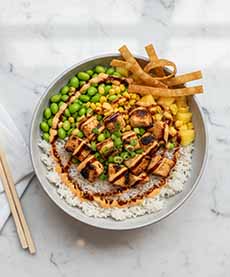
[1] Taking a license with poke: cooked chicken instead of raw fish (A.I. photo).
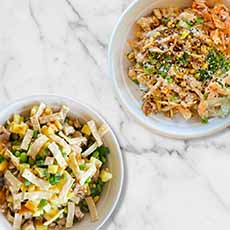
[2] Two offerings at Island Fin Poke: Korean BBQ Chicken Poke (lower left) and Classic Grilled Chicken (upper right—photo © Island Fin Poke).
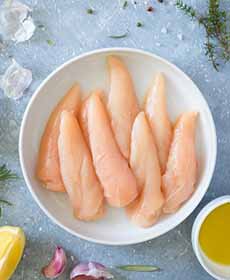
[3] We use chicken tenders because cubing them is much faster than cutting up breasts. These beauties are from John Henry’s Meats, “grazed right, raised right, taste right” (photo © John Henry’s Meats).
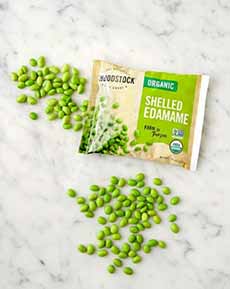 Edamame[/caption] Edamame[/caption]
[4] Edamame are a delicious garnish on any salad or grain bowl. Look in the freezer section to find them already shelled (photo © Good Eggs).
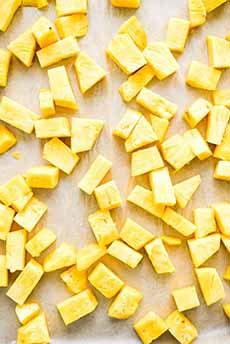
[5] Don’t let cutting a pineapple intimidate you. Here’s an easy way to do it from Fed And Fit (photo © Fed And Fit).
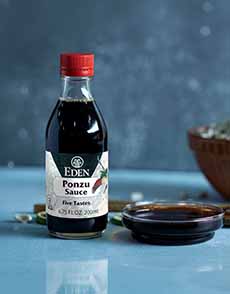
[6] Ponzu is a good light sauce for the recipe. You can buy it anywhere Asian foods are sold, or make your own with this recipe. We prefer it to the thicker sauces used by many poke shops (photo © Eden Foods).
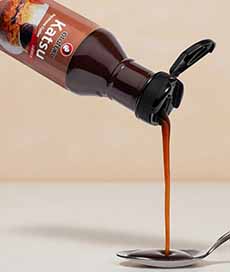
[7] If you prefer a thick sauce, katsu sauce, a Japanese BBQ sauce, isavailable at Asian markets, is your go-to. An easy recipe to make your own is in the ‡‡footnote.
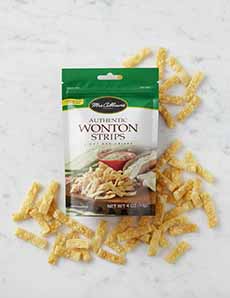
[8] Wonton strips are ubiquitous these days. (photo © Mrs. Cubbison’s | Sugar Foods).
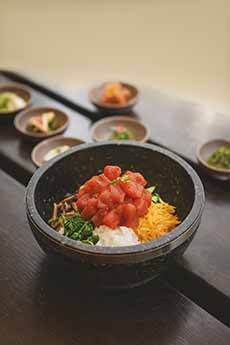
[9] A classic tuna poke bowl (photo © Dons Bogam | NYC).
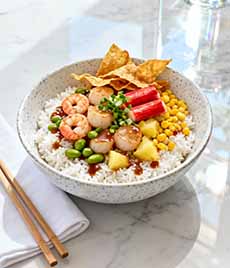
[10] If you don’t eat raw fish, make your poke bowl with cooked fish (A.I. photo).
|
________________
*There is also a National Fresh Ahi Poke Day on August 15th, emphasizing fresh-to-order poke with freshly-sliced fish, a superior preparation to all of the grab-and-go poke bowls.
**The Aloha Spirit is a not only a philosophy but a part of Hawaii’s state law, representing a Hawaiian way of life that embodies love, kindness, compassion, and respect for people and nature. It is defined as a coordination of mind and heart within each person, expressed through the Hawaiian words akahai (kindness), lōkahi (unity), ʻoluʻolu (agreeable), haʻahaʻa (humility), and ahonui (patience).
***Togarashi is a spicy sauce based on shichimi togarashi, a traditional seven-spice blend called Japanese Seven Spice in the U.S. The seven spices are blak sesame seeds, ginger, nori (or poppyseed) orange peel, red chile peppers, sansho (Japanese pepper), and white sesame seeds.
The spice blend is mixed with one or more of these liquids to form a sauce: mirin (sweet rice wine), rice vinegar, sesame oil, and soy sauce or tamari. Garlic or ginger paste can be added.
The result is a sauce that’s citrusy from the orange peel, nutty from the sesame seeds, with a bit of tingle from the sansho pepper. It has less heat but more complex flavors than sriracha.
You can buy it bottled in Asian grocery stores. It can be used as a dipping sauce for dumplings or tempura, on noodles (ramen, noodles, even pasta) or rice/other grains, with grilled meats or vegetables. You can add it to mayonnaise, sour cream, or yogurt for a spicy dip or spread.
†Wicked Wahini sauce is a proprietary recipe used by Island Fin Poke. You can create a similar sauce by mixing sriracha or chili garlic sauce, lime juice, a touch of honey or brown sugar for sweetness, and an optional splash of soy sauce.
††Ono Ono sauce was named after the Hawaiian word for delicious, ono. It refers to a variety of sauces used in Hawaiian cuisine. The specific ingredients can vary widely depending on the type of sauce and whether it is used for meat, fish, etc. An easily acquired version is katsu sauce. If you want to make your own:
†††Katsu sauce recipe: 1/2 cup ketchup, 2 tablespoons soy sauce, 1 tablespoons mirin, 1 tablespoons brown sugar, 1-1/2 teaspoons Worcestershire sauce, 1/2 teaspoon powdered ginger, and 1 clove minced garlic. Whisk all ingredients in a bowl and until thoroughly combined.
‡Korean BBQ chicken is a complex dish: a sticky, caramelized exterior with slightly charred edges and meat that’s sweet, spicy, and garlicky. It starts with marinating for several hours or overnight, then is grilled or cooked on high heat.
The marinade includes rice wine, sesame oil and soy sauce plus brown sugar/honey, garlic, and ginger. Grated Korean pear or apple is added for additional sweetness and is considered important for its tenderizing enzymes. Heat comes by way of gochujang (Korean chili paste), gochugaru (Korean chili flakes), and black pepper. Additional flavor enhancers include grated or minced onion, scallions, and toasted sesame seeds. Sometimes, cola is added for extra sweetness and caramelization!
It’s delicious, but requires time and lots of ingredients.
‡‡Duck sauce, plum sauce, sweet and sour sauce: the differences. Duck sauce is typically a translucent, amber-colored sauce that’s sweet and mild. It’s often made with apricots, peaches, or a mix of fruits (or fruit flavorings). It’s commonly served with Chinese-American dishes like egg rolls and has a fruity base (often apricot or plum). Sweet and sour sauce is usually more vibrant—a red/orange color—and tangier due to a stronger vinegar component, which also gives it a bit of a sour bite to balance the sweetness. It’s also thicker than duck sauce. A quality version may have visible chunks of pineapple or peppers.
Plum sauce is a traditional Chinese condiment made primarily from plums, sugar, vinegar, and spices. It has a more complex flavor with a stronger fruit taste and slight tartness. Duck sauce is the American-Chinese restaurant version. It’s typically sweeter, milder, the Americanized, simplified cousin of traditional plum sauce..
‡‡‡Sake is a fermented rice drink, as wine is fermented grape juice.
‡‡‡‡Panagyaman is an Ilocano term (people inhabiting northwestern Luzon in the Philippines) meaning thanksgiving or gratitude, often used to describe a celebration of a successful harvest. The festival aims to express gratitude for the successful rice harvest and recognize the vital contribution of small farmers to national food security.
CHECK OUT WHAT’S HAPPENING ON OUR HOME PAGE, THENIBBLE.COM.
|



 Edamame[/caption]
Edamame[/caption]





